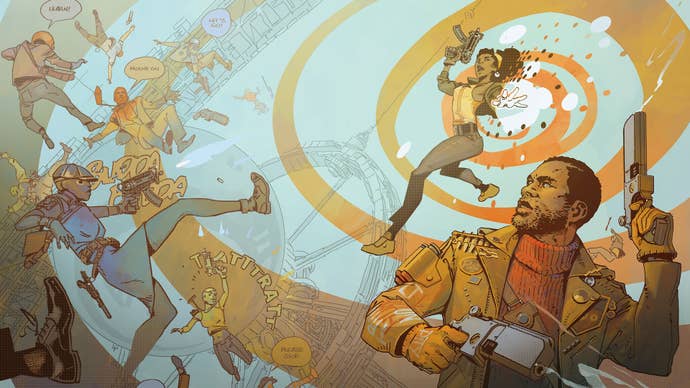Arkane Lyon, the creator of theDishonoredseries andDeathloop, is a studio known for level design.
Frankly, it’s an art, and there aren’t many better at it than Arkane.
How does it do it?

Let me introduce to you the hourglass principle.
Given the time-looping nature of the game, that’s no small feat.
In other words, Dana Nightingale knows her stuff.

And it begins with, she says, something the studio has nicknamed “the white rabbit”.
“This is the thing that catches the players attention,” she explains.
It’s followed by the infiltration phase.

You have to work out how to get past it.
“A classic example of this is ‘‘I want to get inside of that building.'”
“Then, of course, there’s the interior map - that’s our big sandbox playground space.
That’s where things can get very freeform,” she says.
“But then it has to narrow back down to - we call this ‘the last metres’.”
What has this all been leading to?
What’s the specific challenge of overcoming it?
What does the player get after defeating the challenge?"
Or it might be an assassination target in Dishonored.
It’s the climax of the level.
But it should never end there.
“After that we always want an exfiltration,” she says.
“We don’t want to just end it immediately after the goal is completed.
Yes, I’m leaving.'”
Think of the exit doors in Deathloop - and Dishonored, come to think of it.
They’re there to double-check whether you’re done and ready to go.
“That’s just the top half of the hourglass,” Nightingale says.
“I still have two more pieces to explain.
“The pinch of the hourglass is really about the gameplay loop,” she goes on.
And the loop is about what players are feeling in every moment while they’re playing the game.
Crucial to it is a feeling of understanding.
You are not being swept along by something you don’t understand, in other words.
You are consciously, purposefully, directing the action.
“Affordance can mean like a thousand different things.
They know enough to get stuck in.
As she says: “That’s playing with no intentionality.
We want the player to always keep in mind, ‘I’m trying to accomplishthis.’
And, well, it depends.
“But I’m always looking for that combination of affordance and intentionality.
Do I understand the tools the game is giving me?
Do I trust the game to be honest with me?
Which is a very big red flag.
Do I always understand what my goal is?
Do I always understand my obstacles?
Those kinds of things are what I look for.
“At that point I’m like, ‘Teach me, teach me!'”
And thereisa recent example of a game that’s at that sublime or phenomenal level.
She barely has to even think about it when I ask what it is.
“Outer Wilds,” she says.
“Some of the best level design I’ve ever…
The main way you interact with the entire world was just so good.”
I love her answer to this, by the way.
I hope you enjoy the podcast if you listen to it.
There’sa full One-to-One archive of similar podcastsif you want more.